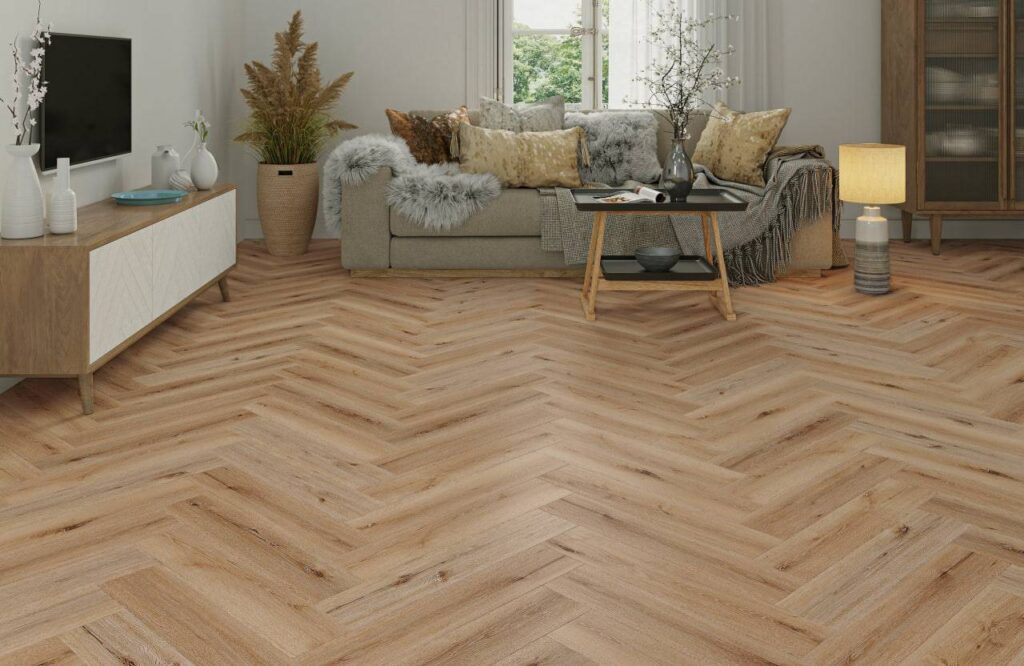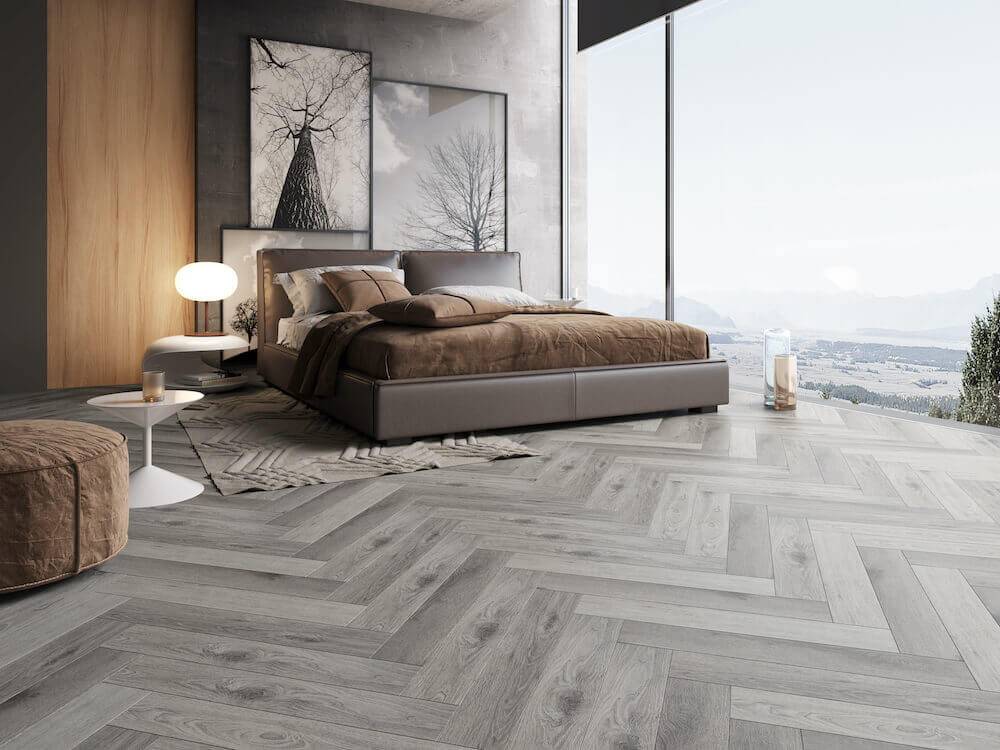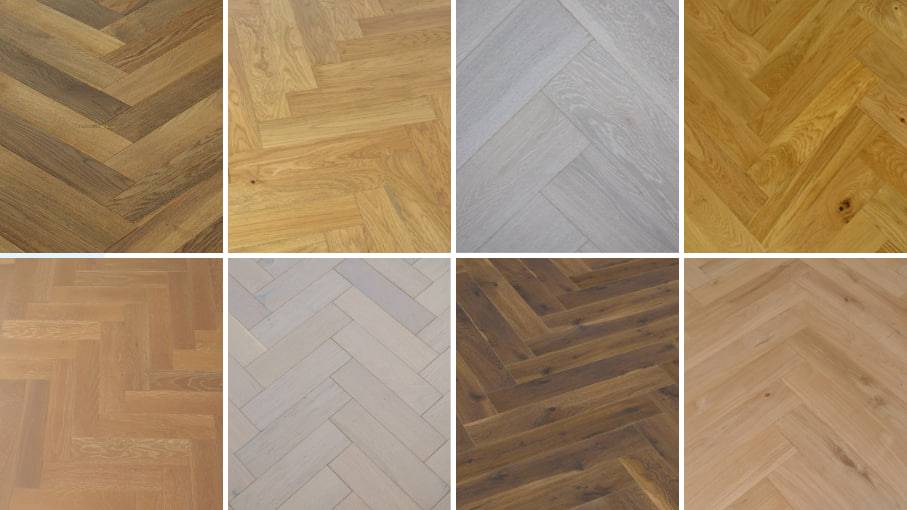Experience a world where timeless elegance is combined with modern style. Herringbone flooring, which has a distinctive zigzag pattern, has been used in the grand halls of Europe for centuries, and its charm remains captivating to modern interior enthusiasts.
This stunning flooring is not only a nostalgic nod to the past, but also a versatile design element that adds depth, texture, and undeniable sophistication to any space. Don’t worry, the intricate herringbone pattern doesn’t signify outdated formality.
In this article, we will explore the captivating world of herringbone flooring, exploring its rich history, modern interpretations, and practical considerations. We’ll reveal the secrets to harnessing its timeless beauty, whether you’re drawn to classic warmth or a touch of contemporary edge.
Get ready to be swept away by the enduring allure of herringbone flooring. Discover how this classic pattern can serve as the perfect foundation for your own design masterpiece.
Herringbone Flooring: From Palaces to Pinterest – A Timeless Journey
The herringbone pattern, with its captivating zigzag dance, isn’t just a trendy floor accent; it boasts a rich history spanning continents and centuries. Imagine stepping back in time, traversing grand European estates where sunlight spills across intricate wooden herringbone floors, a testament to craftsmanship and opulence.
Our journey begins in the 16th century, where skilled artisans in France wove magic with wood, creating elaborate parquet floors for the nobility. Inspired by the skeletal structure of a herring fish, the pattern quickly gained popularity, becoming synonymous with luxury and status. Think Chateau de Fontainebleau, where the grandeur of herringbone floors still mesmerize today.
As centuries unfolded, herringbone traversed borders, captivating hearts across Europe. Each region embraced it with a unique flair. Italy favored lighter woods and intricate geometric borders, while England opted for darker tones and grand statements in stately homes.
Fast forward to the 20th century, and herringbone experienced a revival. Art Deco embraced its geometric precision, while Art Nouveau celebrated its organic flow. But the story doesn’t end there.
Today, herringbone will transcend eras and styles. Its versatility shines through, adapting to modern minimalism, rustic charm, and even playful boho chic. Imagine sleek whitewashed herringbone in a Scandinavian haven, or warm, reclaimed wood adding depth to a farmhouse kitchen.
What keeps this pattern relevant?
Its ability to add visual interest and texture to any space is undeniable. It instantly elevates the ordinary, transforming even a simple hallway into a design statement. The subtle movement of the zigzag creates a dynamic energy that can expand small spaces and add depth to larger ones.
But it’s more than just aesthetics. Herringbone is a conversation starter, a piece of history woven into the very fabric of your home. It’s a reminder of skilled craftsmanship passed down through generations, a timeless choice that transcends trends.
So, whether you’re drawn to the grandeur of its past or the versatility of its present, consider welcoming herringbone into your space. It’s more than just a floor; it’s a timeless design language, ready to tell your unique story.
The Chameleon of Floors: Herringbone’s Versatility Across Styles
Herringbone flooring isn’t a one-trick pony. This classic pattern possesses an inherent chameleon-like quality, effortlessly adapting to a spectrum of design aesthetics. From the stately charm of traditional settings to the sleek lines of modern minimalism, let’s explore how herringbone can elevate any space:
Traditional with a Twist:
- Warm Embrace: Opt for rich wood tones like mahogany or walnut to evoke a sense of history and grandeur. Pair it with plush rugs, antique furniture, and brass accents for a timeless elegance.
- Light & Airy: Achieve a more contemporary take on tradition by using lighter wood varieties like oak or beech. Introduce pops of color through throw pillows or artwork to balance the warmth.
Contemporary Cool:
- Monochrome Magic: Create a striking statement with dark-stained herringbone paired with crisp white walls and minimalist furniture. Chrome accents and geometric artwork add to the modern vibe.
- Nordic Inspiration: Embrace the Scandinavian trend with light-washed herringbone flooring. Introduce natural textures like wool and linen, and keep decor clean and functional for a serene and airy feel.
Rustic Charm:
- Reclaimed Beauty: Infuse your space with rustic warmth by using reclaimed wood with its unique imperfections and weathered charm. Keep furniture simple and natural, incorporating woven baskets and greenery for a cozy touch.
- Painted Playfulness: Add a touch of whimsy with painted herringbone floors. Opt for soft pastels or bold jewel tones to complement rustic furniture and vintage accessories.
Minimalist Masterpiece:
- Less is More: Embrace the power of simplicity with light-colored, narrow-plank herringbone flooring. Keep furniture to a minimum and focus on clean lines and uncluttered surfaces.
- Bold Contrast: For a more daring approach, experiment with dark, stained herringbone in a minimalist space. Let the geometric pattern be the statement piece, pairing it with sleek furniture and monochrome decor.
The Material Muse: Choosing the Right Herringbone for Your Space
The timeless appeal of herringbone flooring extends beyond its pattern – it comes in a variety of materials that cater to different budgets, styles, and needs. Let’s dive into the most popular options and help you find the perfect fit for your home:
Solid Wood
The crown jewel of herringbone, solid wood exudes timeless elegance and warmth. With a vast array of species like oak, walnut, and maple, each plank boasts unique grain patterns and natural beauty.
- Pros: Durable, refinishable, increases property value, authentic look and feel.
- Cons: Expensive, susceptible to moisture and humidity changes, requires regular maintenance.
- Look & Feel: Luxurious, classic, timeless, natural warmth.
Engineered Wood
A budget-friendly alternative to solid wood, engineered planks offer the same stunning look with a more stable core. The veneer of real wood ensures a genuine aesthetic.
- Pros: More affordable than solid wood, dimensionally stable, easier to install, wider variety of finishes.
- Cons: Not as durable as solid wood, cannot be refinished as many times, veneer can chip or peel if damaged.
- Look & Feel: Similar to solid wood, yet slightly less variation in natural grain patterns.
Laminate
Known for its affordability and practicality, laminate mimics the look of wood through high-resolution imagery.
- Pros: Most affordable option, easy to clean and maintain, water-resistant, wide variety of designs and colors.
- Cons: Not as durable as wood, cannot be refinished, synthetic feel, may look less authentic.
- Look & Feel: Realistic wood appearance, but the texture and sound might not be identical to real wood.
Vinyl
Vinyl tiles offer a water-resistant and low-maintenance solution, often mimicking the look of wood or stone.
- Pros: Very affordable, waterproof, easy to install and clean, durable against wear and tear.
- Cons: Synthetic feel, limited design options compared to wood, may not add significant value to your property.
- Look & Feel: Can offer realistic wood or stone textures, but might lack the depth and warmth of natural materials.
Choosing the Right Material:
- Budget: Solid wood reigns supreme for luxury, but engineered wood offers a good balance. Laminate and vinyl are most budget-friendly.
- Durability: Solid wood and engineered wood are most durable, followed by laminate and vinyl. Consider traffic and potential water exposure.
- Aesthetics: Solid and engineered wood offer the most natural look and feel. Laminate and vinyl can mimic various styles, but might lack authenticity.
- Maintenance: Solid wood requires the most care, while vinyl is easiest to maintain. Engineered wood and laminate fall in between.
Herringbone Flooring FAQs:
Is herringbone flooring hard to maintain?
It depends on the material. Solid wood requires the most care, while vinyl is low-maintenance. Engineered wood and laminate fall somewhere in between.
Is herringbone flooring expensive?
Solid wood is the most expensive, followed by engineered wood. Laminate and vinyl are the most affordable options.
Is herringbone flooring good for small spaces?
Yes! The zigzag pattern can create an illusion of spaciousness. Lighter colors and narrower planks can further enhance this effect.
Can I install herringbone flooring myself?
While possible, it’s a complex process requiring precision. Professional installation is generally recommended for best results.
What’s the difference between solid wood and engineered wood?
Solid wood is a single piece of timber, while engineered wood has a core with a real wood veneer. Engineered wood is more stable and cost-effective.
Is laminate or vinyl good for herringbone flooring?
They offer affordability and low maintenance, but may lack the authenticity and warmth of real wood. Consider your budget and priorities when choosing.
Which material is most water-resistant?
Vinyl is the most water-resistant, followed by engineered wood with a waterproof core. Solid wood needs careful maintenance to avoid moisture damage.
What color should I choose for my herringbone floor?
Lighter colors create an airy feel, while darker tones add warmth and drama. Consider your overall design scheme and the amount of natural light in the space.
Can I use herringbone flooring on walls or backsplashes?
Absolutely! It adds a unique design element and visual interest to various surfaces.
What styles does herringbone flooring work best with?
It’s incredibly versatile! From traditional to modern, rustic to minimalist, herringbone can adapt to various aesthetics.



